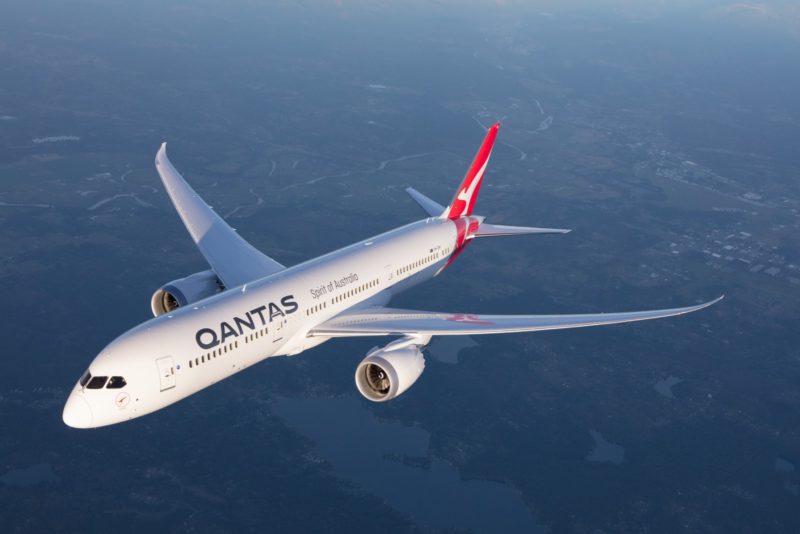Just five days after Airbus presented record order and delivery results, Boeing has released their 2019 results, which highlights shocking figures, as a result of the 737 MAX crisis.
Boeing saw gross orders dip 77 percent to 246 in 2019; whilst net orders after cancellations or conversions reached a total of 54 aircraft, compared to the 896 recorded in 2018. However. after an accounting adjustment, that sees the order book comply with the *ASC 606, net orders fell to negative 87 aircraft.
Deliveries fell by 56 percent to 380 aircraft; which brings the company to an eleven year low, as a result of the global 737 MAX grounding which is soon approaching one year.
Reuters reports that Boeing’s book-to-bill ratio, which measures against deliveries, came in at negative 0.23 in 2019.
These order and delivery figures are usually in contest with rival Airbus, however no competition is seen in 2019 due to the 737 MAX situation. Airbus recorded net orders for 768 aircraft and delivered 863 in 2019, officially making them the largest commercial aircraft manufacturer in the world.
Where attention is immediately drawn to is the 737 program. What was meant to be the company’s best selling, and highest delivered, model turned out to be a massive sore to the bottom line, after the two crashes that killed 346 people and left the aircraft grounded around the world from March.
A total of 127 737s were delivered in 2019, consisting of some 737 MAXs prior to the grounding and some of the last remaining 737 NG models. Only nine were delivered in the fourth quarter – a time usually reserved for increased deliveries to meet yearly delivery goals.
Boeing wasn’t all doom and gloom though; especially during the last three months of the year, when a record number of 787 Dreamliners were delivered to airlines. 45 of the aircraft were delivered to new and existing customers around the world, with the 2019 total reaching 158 aircraft. Only a small number of cancellations were reported by Reuters, with unidentified customers cancelling three 787-9s in December and an order for a single 787-8.

The classic 777 still saw adequate delivery performance whilst its successor, the 777X, continues to prepare for its flight test campaign, set to commence early this year. The fourth quarter alone saw 12 aircraft delivered; including one under operating lease and the 2019 full year saw a total of 45 delivered, with two under operating lease.
Boeing managed to keep the 747 slowly moving in 2019, however deliveries remained extremely low. Only two aircraft were delivered in the fourth quarter, bringing the years total to seven. This is due to the weakening demand for quad-engine airliners, in favour of twins; however this highlights a requirement for large capacity freighters, with versatile loading and hauling options.
The 767 saw great performance in 2019, however not in passenger models as Boeing has reserved the type for freighter and military tanker models. A total of 43 aircraft were delivered in 2019, 11 being delivered in the last three months leading up to 2020.
Boeing notes in a disclaimer in their press release that these delivery results are not considered final; they will not be until their fourth quarter financial results are published on the 29th of January. A clearer picture of the 737 MAX impact will be painted when these results are published, as analysts estimate that Boeing has been losing $1 billion per month because of the crisis.
With the aim to restore Boeing’s reputation and pull the company out of its spin, David L. Calhoun has assumed the role of president and chief executive officer of The Boeing Company; replacing Dennis Muilenburg.
“I’m honoured to lead the talented people of Boeing as we face our challenges. Working together, we will strengthen our safety culture, improve transparency and rebuild trust with our customers, regulators, suppliers and the flying public. With the strength of our team, I’m confident in the future of Boeing, including the 737 MAX.”
David L. Calhoun
The 737 MAX is scheduled to receive certification to fly again this year, however the damage is expected to hinder Boeing over the next couple of years. Calhoun says, in an email to employees, that the company’s biggest priority for 2020 is returning the 737 MAX to service safely whilst maintaining company values and rebuilding trust with customers, regulators and the flying public.
Note(*): ASC 606 Standard
“ASC 606 is a new standard developed by the Financial Accounting Standard’s Board (IASB) and provides a framework for businesses to recognise revenue more consistently. The standard’s purpose is to eliminate variations in the way businesses across industries handle accounting for similar transactions. This lack of standardisation in financial reporting has made it difficult for investors, and other consumers of financial statements, to compare results across industries and even companies within the same industry.”
— Description directly from Financial Force
Essentially firm orders, where it is clear that they will never be fulfilled (airline goes bankrupt, broken down etc (Jet Airways)), have to be removed from the order book. Although the signed contract is present, and a small portion of money may have been transferred, if a liquidator hasn’t cancelled the order it becomes a zombie order, which is where ASC 606 declares it must be removed from the results.




